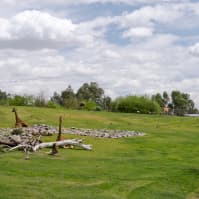AMWUA Blog
BY: Kathleen FerrisThe Phoenix Zoo Shows You How To Save Water And Money

In the last 22 months, the Phoenix Zoo reduced its water use by 20 percent. That saved the zoo $80,000 on its water bill over the past two years and conserved 19,500 million gallons of drinking water for all of us. The Phoenix Zoo saved the water and money the same way any business improves, by changing its culture.
The Phoenix Zoo is a private non-profit organization that cares for more than 1,400 animals and has 300 staff members, including vendors. Like any business, change started with a committee that had the knowledge and the authority to create a workable plan to save water and, then, put it in place.
It is no longer acceptable for zoo staff members to walk around a puddle of water on the sidewalk as they go about their duties. It is now everyone’s job to stop and find the source of the leak. Then staff members call the right department to fix the leak, whether the water is from a planter, an irrigation line or the bottom of a water cooler.
Staff members now clean with high-powered hoses only when and where they need to, instead of using the hoses to clean indiscriminately. For example, the mountain lion’s night house needs a good high-powered spraying every day to keep it tidy, but a broom or blower is enough to clean leaves from a sidewalk.
Here are other water-saving projects that helped the Phoenix Zoo and its staff to save water.
- Landscaping changes. The zoo started to revamp its tree selection three years ago. The trees had to thrive without much water, offer shade for the animals, and provide plenty of trimmings, which are added to the diets of the animals, including giraffes and big horn sheep. The zoo now favors mesquite and palo verde trees along with fever and tipu trees from the arid African plains.
- Turf reduction. For the last two winters, the zoo has not seeded winter rye grass on about 6 acres. That includes sections along the main lake and in several large exhibits, such as the Savana, home to giraffe, eland, vultures and more.
- Timer installation. Many of the zoo’s residents survive the summer with the help of misters, in particular small birds such as the Buff Crested Bustards. The zoo once kept those misters on all night, not because they were needed all night but because no one was around to turn them all off. This summer, the zoo finished putting the animal misters on timers designed for the particular needs of each animal. For most, the misters are timed to go off sometime after the sun goes down and the temperature drops.
- Irrigation efficiency checks. Zoo employees made rounds to ensure that every irrigation line led to a tree or plant and water gauges were timed correctly. Employees fixed lines that were watering sidewalks and disconnected lines watering trees that had been removed years ago.
- Rain harvesting. With the help of a grant and the Watershed Management Group , the Phoenix Zoo now has two 1,300-gallon cisterns that collect rainwater running off the Red Barn near the petting zoo. Rain captured by the cisterns is used to water the landscape around the barn. The landscape has been reshaped to allow water to run into swales and washes and hold the water so it can sink deep into the roots of trees and plants. The zoo completed the project Sept. 7, the day before Phoenix received 5 inches of monsoon rain. The zoo is considering using rain harvesting techniques in the landscape designs for new administration buildings now under construction and in the tiger exhibit it’s building next year.
- Faucet retrofits. The Phoenix Zoo has two popular water playgrounds. A year ago, the zoo retrofitted the sprays and squirts with high-performing but water-saving faucets. The kids never noticed.
The techniques used by the Phoenix Zoo to save water are not fancy and can work for your business or in your backyard. Learn more about the Phoenix Zoo’s conservation efforts and how to implement the zoo’s water-saving techniques.
For 45 years, Arizona Municipal Water Users Association has worked to protect our member cities’ ability to provide assured, safe and sustainable water supplies to their communities. For more water information visit www.amwua.org.
